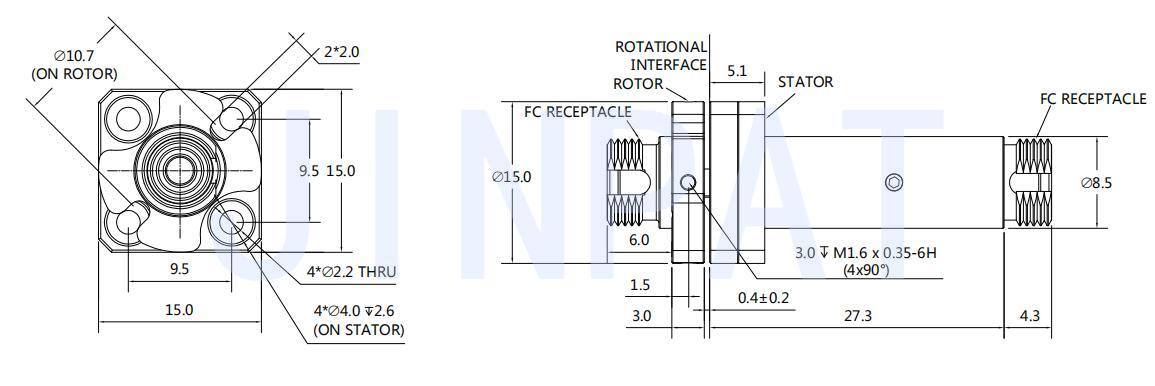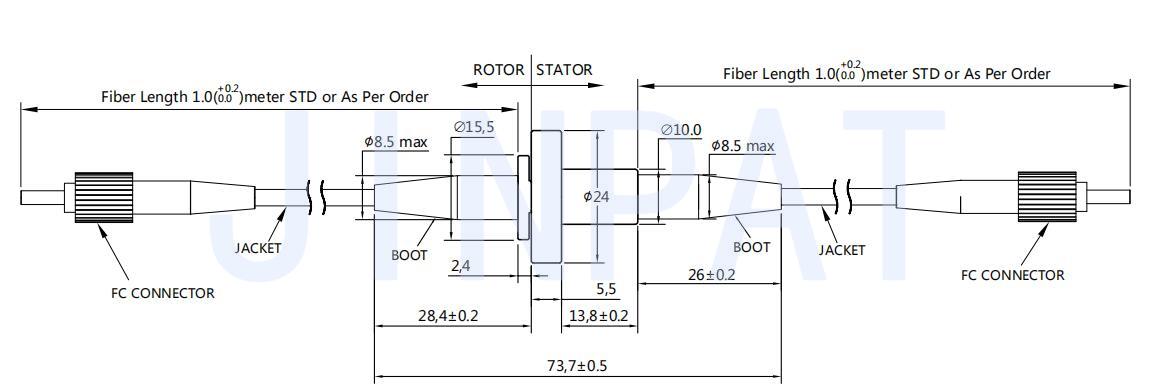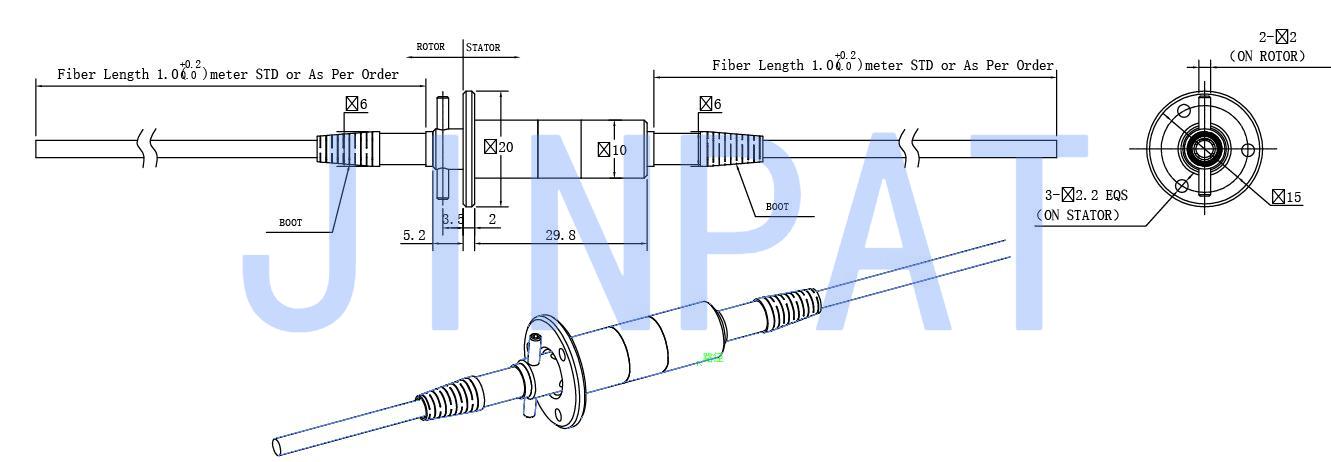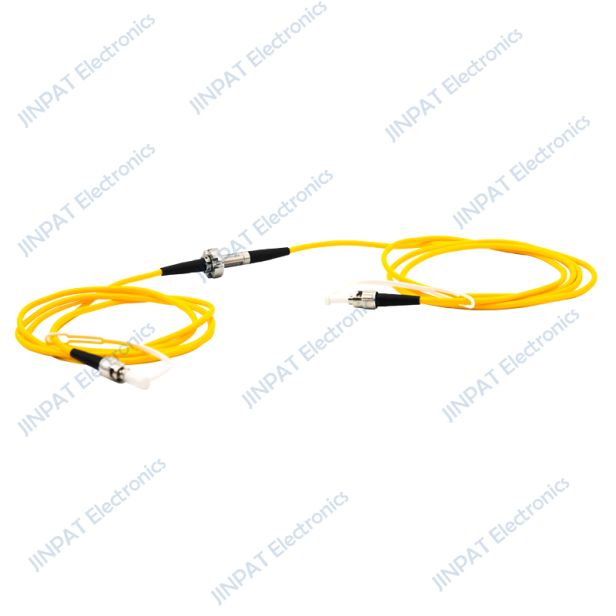The fiber optic rotary connector, also known as a fiber optic slip ring, fiber optic rotary joint, or fiber optic hinge, uses optical fibers as the data transmission medium. It provides a technical solution for data transmission between system components that require rotational connections. It is suitable for applications where continuous or intermittent rotation is needed while transmitting large volumes of data and signals from a fixed position to a rotating position. This device can improve mechanical performance, simplify system operation, and prevent damage to optical fibers caused by the rotation of moving joints. It can be used in conjunction with traditional electrical slip rings to form hybrid electro-optical slip rings, capable of transmitting both power and high-speed data.
Specifications |
Fiber types |
SM or MM
|
Connector types
|
F C/SC/ST/LC(PC or APC)
|
|
Channel number
|
1
|
Estimated life cycle
|
>200 million revolutions
|
|
Wavelength range
|
SM:1270-1650nm
MM:650-1300nm
|
Vibration
|
MIL-STD-167-1A
|
Insertion loss |
<2dB
|
Mechanical shock
|
MIL-STD-810G
|
|
Insertion loss ripple
|
<0.5dB
|
IP rating
|
IP65 or IP68
|
|
Return loss
|
≥40dB
|
Maximum speed
|
2000rpm
|
|
Max Optical power
|
23dBm
|
Working temperature
|
-45~+80℃
|
|
Package style
|
Pigtails on both ends
|
Storage temperature
|
-55~+85℃
|
|
Weight, approx
|
10g(No tail cable andconnection included)
|
Jacket types
|
0.9/2/3mm(Kevlar/PVC or Armor)
|
LPFO-01B Product Outline Diagram

LPFO-01C Product Outline Diagram

LPFO-01D Product Outline Diagram

LPFO-01E Product Outline Diagram

LPFO-01F Product Outline Diagram

LPFO-01N-B Product Outline Diagram

LPFO-01N-E Product Outline Diagram









